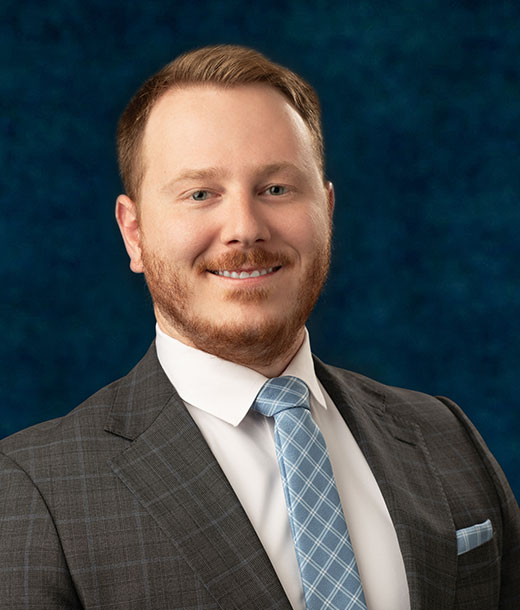Flagstaff Premises Liability Lawyer

Flagstaff Premises Liability Attorney
In the United States, more than 30 million people must seek medical attention for injuries each year. The causes of these injuries are vast, but you can be sure that many of these ailments are a result of negligent property owners.
Premises liability is an area of law that holds land and property owners responsible for ensuring the safety of their visitors. When landowners fail to meet the duty required of them, they can be found liable for any injuries that result from their negligence. Both commercial and private entities are subject to premises liability principles.
Keep reading for an overview of how premises liability works in Arizona, and contact Glazer, Hammond, Ruben & Smets, PLLC if you need a consultation about your specific case.
The three types of guests and the duties they are owed
There are three types of visitors on a property: invitees, licensees, and trespassers. The differences between each kind are defined by the relationship between the guest and the landowner. The extent of responsibility that land or property owners owe depends on the type of visitor someone is.
Invitee
Whenever you shop at a grocery store, you are an invitee. An invitee is a person who has explicit or implicit permission to visit a property for business reasons. Any individual who has an impersonal purpose to legally access a property is defined as an invitee. This includes customers who visit restaurants, retail stores, or delivery personnel. The law considers visitors on public property to be invitees as well.
Businesses are required to warn invitees of any dangerous conditions that exist on their property. When an injury is the result of a hazardous condition, then it may be possible to file a lawsuit if the case can prove that:
- The business knew about the condition, or
- An employee was the cause of the condition, or
- The condition should have been detected before the injury occurred
Licensee
A licensee is a guest invited to a property by the landowner for personal reasons. Social guests are a common example here. You are a licensee when you go to a friend’s home for dinner. Salespeople are also licensees.
Ordinarily, property owners are only obligated to warn licensees about any dangerous circumstances if the condition is excessive or not obvious. For example, the licensee should be notified of a hole in the floor or a sharp and exposed surface. If the property owner is not aware of a dangerous condition before it causes an injury to a licensee, then the owner is not liable.
Trespasser
A trespasser describes someone who enters a property illegally. Trespasser behavior describes someone entering a property without straightforward or implied permission from the owner. In this circumstance, property owners are generally not liable for any injuries a trespasser could incur while on the property, although there are a few exceptions. Property owners are responsible for any injuries they may purposefully cause trespassers. For example, if a suspicious landowner sets a trap to catch trespassers, and the trap causes an injury, the landowner is liable for that injury.
Child trespassers
Property owners must give child trespassers a higher degree of reasonable care. An “attractive nuisance” is a condition that children find attractive and do not understand to be dangerous. It is the responsibility of a landowner to ensure that their property is safe; if this kind of condition injures a child, the property owner can be held responsible for the injury under the Attractive Nuisance Doctrine.
A common example of an attractive nuisance is a swimming pool that is not properly restricted. For instance, a landowner could be responsible for injuries that occur from a child at play entering an unsecured pool. Even though the child did not have the owner’s permission to be on the property, the failure to secure the attractive nuisance is the fault of the pool’s owner. Injuries to a child that result from leaving machinery or equipment in an accessible location are another example of an attractive nuisance.
To avoid the chance of injuries due to attractive nuisances, landowners need to implement reasonable steps, including:
- Utilizing fences or barriers that restrict access to dangerous areas
- Placing locks on fences
- Unplugging and securely storing all machinery, tools, and dangerous objects
- Securely covering any ditches and holes on the property
- Removing keys from parked vehicles and ensuring that all of the doors and windows are locked
- Taking off the doors on appliances that are outside (i.e. removing a washing machine door if it is on the curb to be picked up)
- Providing warning of any dangerous conditions to any parents of children that are likely to trespass (i.e. the children of your neighbors)
The goal of reasonable action is for landowners to consider and prevent conditions that may be harmful and attractive to children.
Proving premises liability in Flagstaff, AZ
There are multiple aspects that your case must prove in order to recover compensation in a premises liability suit. An effective premises liability attorney will consult with you to develop a strong case on your behalf.
Establish the at-fault party
To begin, your case needs to identify the liable party. The suit must demonstrate who owned, occupied, or leased the premises where the injury occurred. In some cases, liability is shared between more than one party.
Once the at-fault party has been established, your case needs to prove that the liable party failed to maintain safe conditions. For this, the following questions must be examined:
- Was the liable party aware of the unsafe condition? Did the owner know about the unsafe condition long enough to have taken safety precautions to prevent injury?
- Did the liable party alert visitors of the unsafe condition?
- Did the liable party attempt to make the dangerous condition safe? Property owners are responsible for making a reasonable attempt to fix any danger they become aware of
Prove Negligence in Arizona
Additionally, a premises liability case needs to demonstrate that the unsafe condition was a result of negligence. To achieve this, the four elements of negligence need to be satisfied:
- Did the property owner owe a duty of care to the injured party?
- Did the property owner violate this duty of care?
- Did an injury occur as a result of this violation?
- Did the injury cause monetary loss for the victim?
Consult with a premises liability attorney in northern Arizona
Being a victim of someone’s negligence is difficult. It is challenging to recover from injuries; worrying about financial or legal issues should not make the healing process more difficult.
Hiring the right attorney to handle your premises liability case goes a long way in eliminating stress and prioritizing recovery. Glazer, Hammond, Ruben & Smets, PLLC is a law firm dedicated to serving its clients by recovering the most compensation possible. If you believe you have a premises liability case, schedule a consultation with Glazer, Hammond, Ruben & Smets, PLLC to get one step closer to compensation today.








